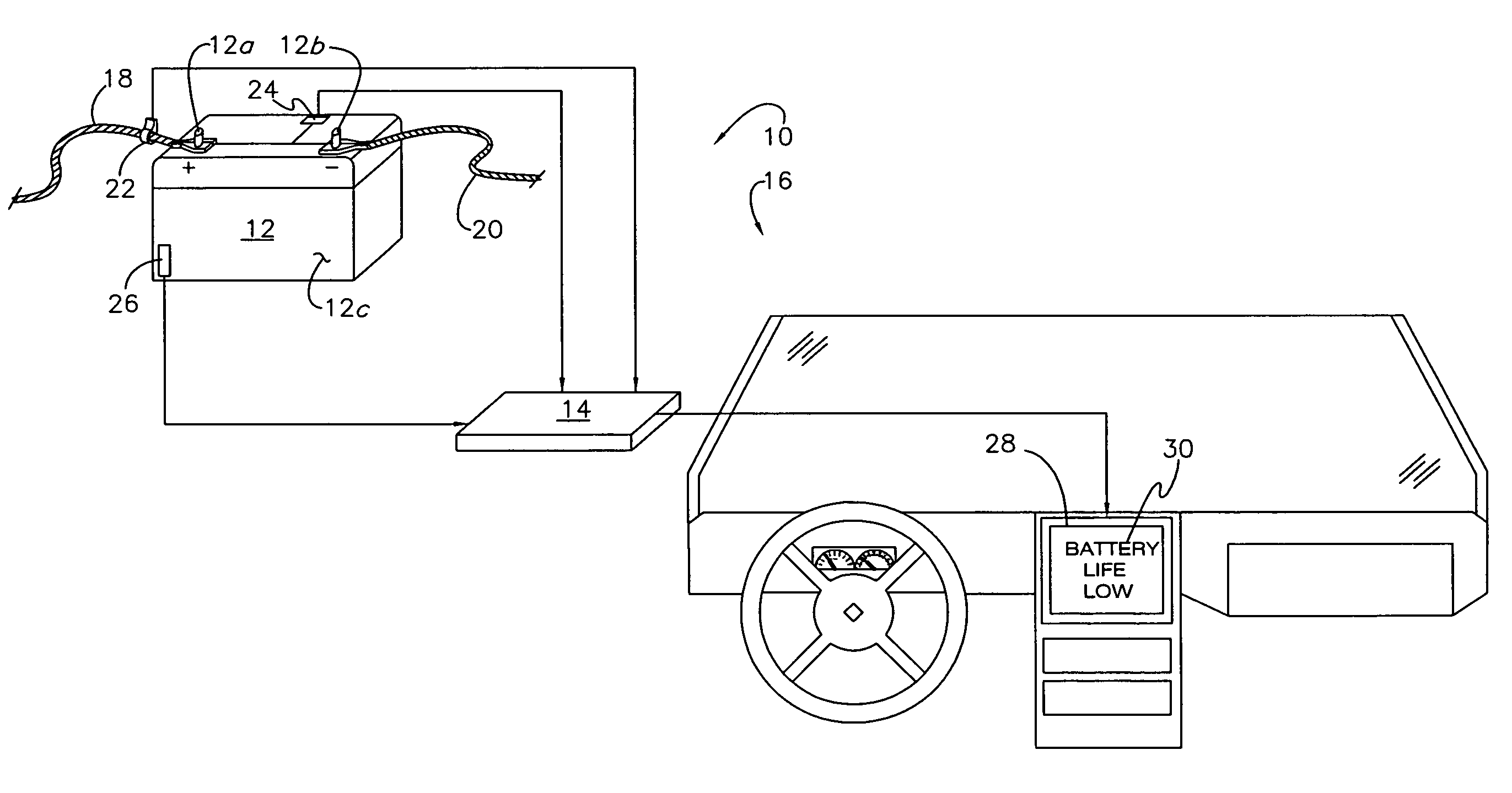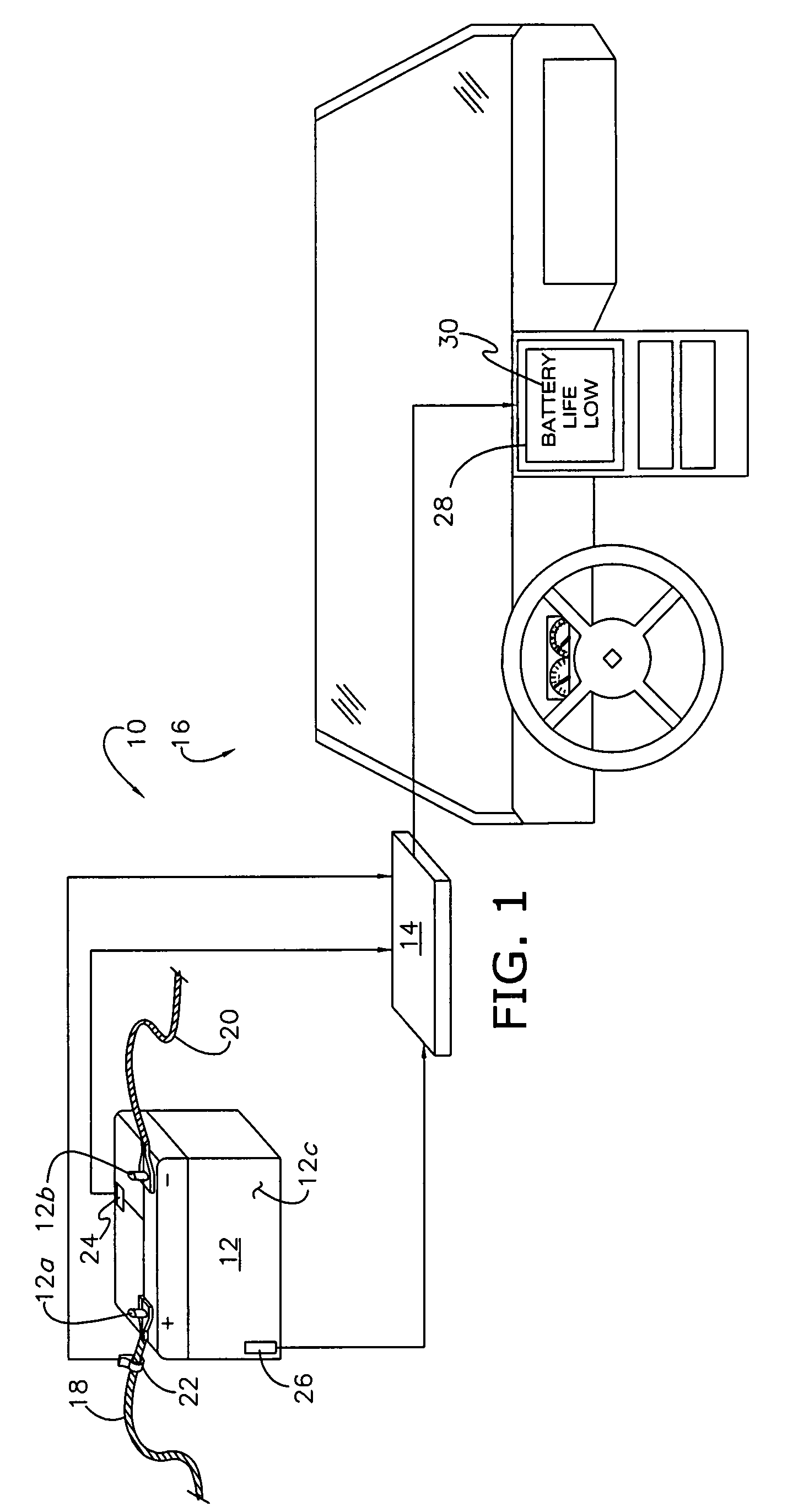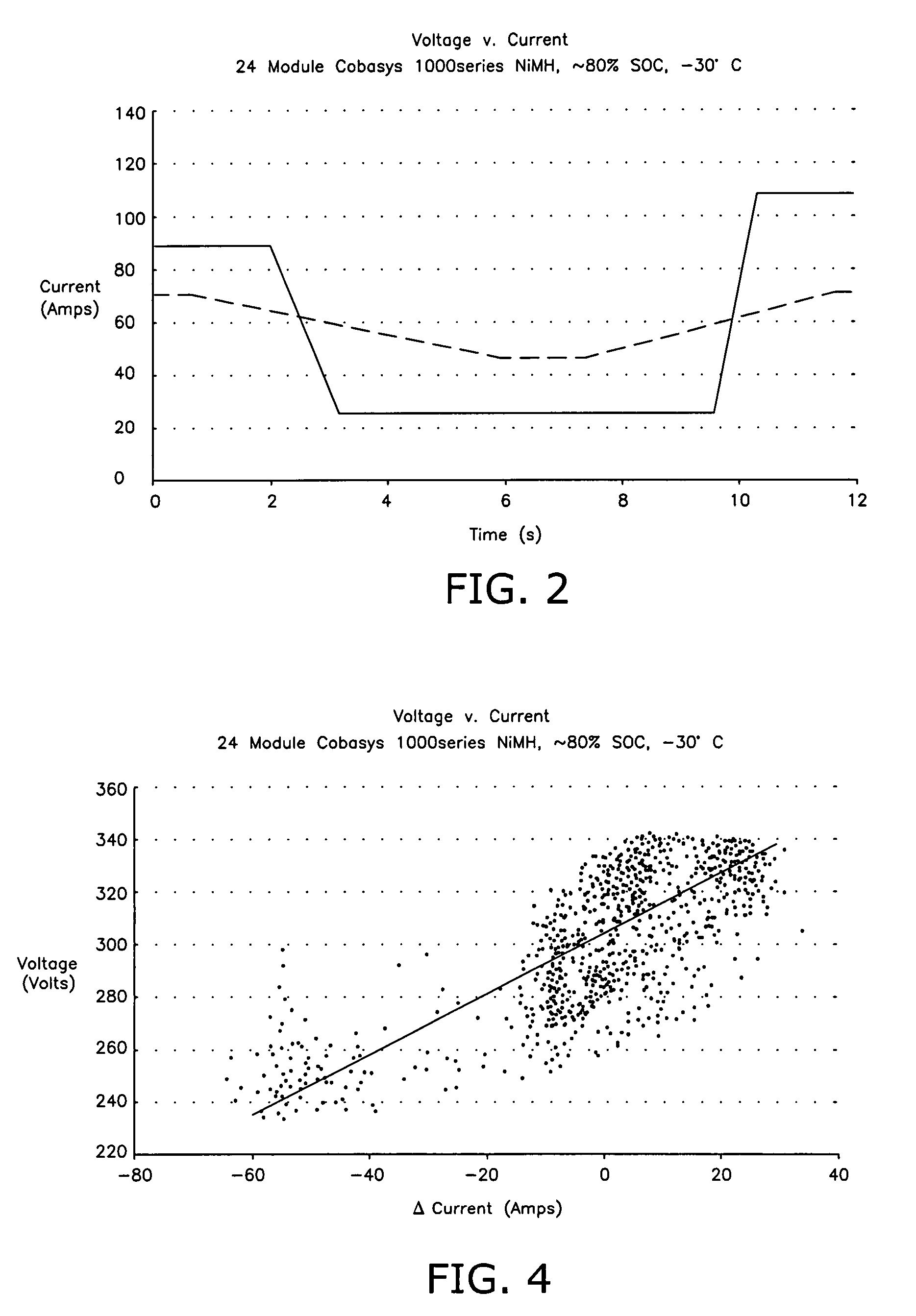Adaptive filter algorithm for estimating battery state-of-age
a filter algorithm and battery technology, applied in the field of system and method of measuring, estimating, or otherwise determining the state of a battery, can solve the problems of over-complexity for applications requiring only battery age information, increased energy consumption, communication load and other operational/networking costs, and the typical all-or-nothing functionality. , to achieve the effect of data sample rates, and reducing the number of inputs
- Summary
- Abstract
- Description
- Claims
- Application Information
AI Technical Summary
Benefits of technology
Problems solved by technology
Method used
Image
Examples
Embodiment Construction
[0021]The present invention concerns a system 10 configured to execute an adaptive algorithm for efficiently determining the state-of-age of a battery 12 active within a completed circuit. More particularly, the algorithm is configured to estimate the true impedance (i.e., resistance) of the battery 12. The algorithm is executable by at least one electronic control unit or controller 14, such as the main CPU of a vehicle 16, or a laptop removably interconnectable thereto, and as such is programmably inputted therein. Suitable memory storage, source code and processing capability necessary for execution is readily determinable by those of ordinary skill in the art, and as such will not be discussed herein. The system 10 and method of use are described and illustrated herein with respect to vehicular battery use, as shown in FIG. 1; however, it is appreciated that the benefits and advantageous of the invention may be utilized with other devices, such as smart devices, laptops, and oth...
PUM
 Login to View More
Login to View More Abstract
Description
Claims
Application Information
 Login to View More
Login to View More - R&D
- Intellectual Property
- Life Sciences
- Materials
- Tech Scout
- Unparalleled Data Quality
- Higher Quality Content
- 60% Fewer Hallucinations
Browse by: Latest US Patents, China's latest patents, Technical Efficacy Thesaurus, Application Domain, Technology Topic, Popular Technical Reports.
© 2025 PatSnap. All rights reserved.Legal|Privacy policy|Modern Slavery Act Transparency Statement|Sitemap|About US| Contact US: help@patsnap.com



